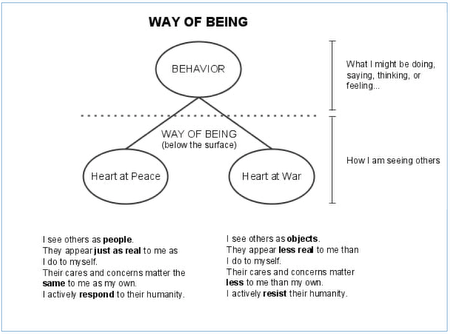 Today, I wish to share a personal experience with all of you that informed this devotion because it has been something I have been reflecting on for the last four or five days now. I have been through a lot of up and down emotions since Friday’s Supreme Court Ruling and have had multiple conversations with Christians and non-Christians alike as we live into this new reality. Part of this ties to Pastor Philip’s sermon on Sunday regarding anger and part of this has to do with what God is teaching me while I am in relationship with people I don’t always agree with.
Today, I wish to share a personal experience with all of you that informed this devotion because it has been something I have been reflecting on for the last four or five days now. I have been through a lot of up and down emotions since Friday’s Supreme Court Ruling and have had multiple conversations with Christians and non-Christians alike as we live into this new reality. Part of this ties to Pastor Philip’s sermon on Sunday regarding anger and part of this has to do with what God is teaching me while I am in relationship with people I don’t always agree with.
For the first time, in a long time, I decided to post something on Social Media, on my own page, using my own story and my own opinions. For the most part, there was positive feedback in the form of agreement, appreciation, and respectful conversation. But there is always a few that can ruin a good thing. As a pastor, I have never used Social Media to push an agenda, to endorse a candidate, to call someone out or to speak about things I know very little about. And so I prayed hard and processed deeply the words that I felt I needed to share as a woman of faith on the issue. I know that God was in it because I have heard from quite a few women and men who have struggled in their faith over the last few years and by me lending a voice and a personal opinion to the mix, a door was opened for conversation about the Christian faith, Scriptural interpretation and where Jesus is present when we struggle. I also know that this was of God because several of these people I hadn’t talked to since High School and so I am thankful that they reached out and I hope I can maintain a friendship with each of them. While those interactions were positive, one thing I learned in this experience over the last weekend is something I have always known but still hurts when it happens to you. The truth is this, not everyone will agree with me. This may sound obvious, but when members of your own family start to degrade and discredit you in a public setting, I found myself taking a deep breath and then pondering, if I am truly a follower of Jesus, I must find a way to have a Heart at Peace. I alluded to this in my pastoral Prayer on Sunday as well. How do you have a heart at peace when it seems like you have one conversation after another with someone that seems to have a heart at war? How do you peaceably engage with someone that is after you, in every sense of the word who wants to do very little listening and a whole lot more arguing? How do you act as the face of Christ when the person you are engaging with just wants to be right?
One of the most formidable books I have read and taught on over the last few years has been, The Anatomy of Peace, by the Arbinger Institute. I had a chance to plan a sermon series and Bible Study around this book at my last church. I may re-read it as we continue to walk through polarizing times as a nation and as a denomination. I don’t know about you, but I have felt like there has been one struggle, one disagreement, one divisive thing after another, especially over the last two or three months. And I can physically feel that part of me that wells up and gets a “hot nose” as we heard about on Sunday, when I perceive an attack coming on. Jesus was not a stranger to conflict and disagreements, and quite frankly I’m not sure where this idea of the ‘Precious and Gentle Jesus’ came from, but I think Jesus had a part of him that was constantly having to defend himself and his followers. I am sure there were moments that could have push his buttons and really made him angry, as we heard about on Sunday, but he used that righteous anger for reconciliation. Ultimately, Jesus is the best example of having a heart at peace when everyone else seems to want to go to battle.
While I am nowhere near perfect in having a heart at peace, God has used specific experiences in ministry, in family and in society to help me learn how to have a heart at peace where I would otherwise go on the defense. I wanted to share a diagram with you that may help. The book talks about having a “way of being” and how there are essentially two ways of being. One is with a heart of war, where we see people as objects and the other is a heart at peace, where we see people as people. I’m sure you can guess which way of being I would encourage and which way of being Jesus modeled.
I want to encourage each of us reading this to have hearts at peace. Remember, no one was ever argued into a new perspective and all conflict isn’t bad. Social Media and Email isn’t the best way to communicate your strong views, but face to face conversation is the Biblical way and the best course of action for mature followers of Jesus. Intrapersonal conflict is inevitable in this thing called life, but the Holy Spirit is still at work even in the most tense of situations. I want to encourage you, as I learn this lesson myself, to always strive to have a heart at peace and to see people as people, not as objects. To honor their Imago Dei and their sacred worth, even if they seem like a piece of work in the moment. We remember that we are all broken, including ourselves and that God is not finished with us yet. I hope this diagram helps you think through how to choose a heart at peace in the midst of conflict. I hope this devotion speaks an encouraging word to you too because I am also on this journey, and we are figuring this out together!












